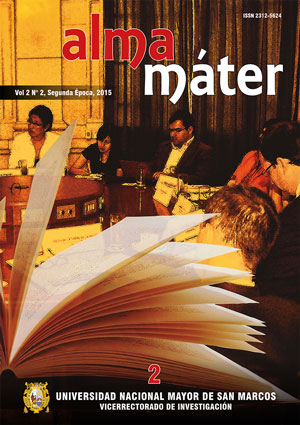CHALLENGES AND PROSPECTS OF UNIVERSITY RESEARCH IN PERU
Keywords:
University research, Peruvien university, Technological Dependence, Institutional Inbreeding.Abstract
This paper evaluates scientific, technological and humanistic research at the Peruvian university system. The first part analyzes the insufficiency of critic mass as an explanation of the diminished positioning of the scientific outcomes of our universities at global and regional levels using RICYT as source data base. Besides, the low standard of graduates studies are identified as a causal factor of the former results, and the organizational deficiencies such as disarticulation and merchandising too. The second part focuses on epistemological obstacles with roots in colonial culture, including institutional inbreeding, categorical errors, rejection of: the experimental methodology, learning of diversity of mathematical language, research in basic sciences, rigorization of social sciences and using metric tools for assessment of the cognoscitive productivity. In short, this paper is claiming for finishing our bicentennial sustainable underdevelopment.Downloads
Published
Issue
Section
License
Copyright (c) 2015 Luis Piscoya Hermoza

This work is licensed under a Creative Commons Attribution-NonCommercial-ShareAlike 4.0 International License.

Alma máter segunda época by Vicerrectorado de Investigación y Posgrado is licensed under a Creative Commons Reconocimiento-NoComercial-CompartirIgual 4.0 Internacional License.
Creado a partir de la obra en http://revistasinvestigacion.unmsm.edu.pe/index.php/alma/index.
AUTHORS RETAIN THEIR RIGHTS:
a. Authors retain their trade mark rights and patent, and also on any process or procedure described in the article.
b. Authors retain their right to share, copy, distribute, perform and publicly communicate their article (eg, to place their article in an institutional repository or publish it in a book), with an acknowledgment of its initial publication in Alma máter segunda época.
c. Authors retain theirs right to make a subsequent publication of their work, to use the article or any part thereof (eg a compilation of his papers, lecture notes, thesis, or a book), always indicating the source of publication (the originator of the work, journal, volume, number and date).



